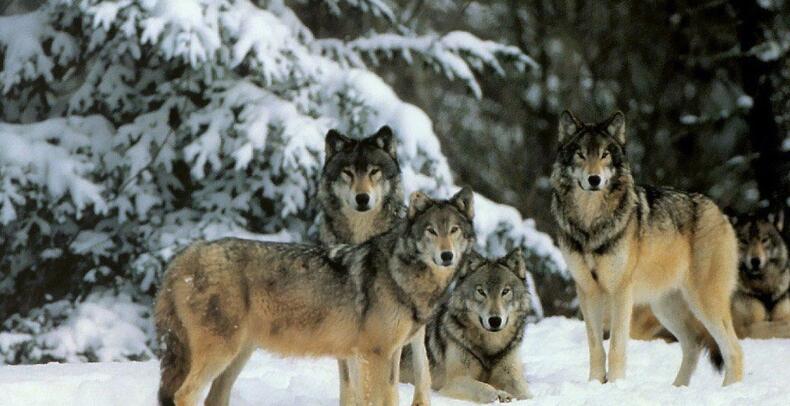The natural history of wolves dates back several million years. These creatures were once widespread throughout the globe, covering the majority of China’s territory save for Taiwan and Hainan. For ancient people, the wolf was both an enemy, but also a good helper. One widely held myth about wolves suggested that the domestic dog originated with wolves that were carefully trained by humans. Further research debunked this theory and showed it was more likely that dogs stemmed from the communal relationship between humans and wolves. In ancient times, humans survived by hunting. A pack of wolves proved helpful when hunting larger herbivores and assisted the humans who used specially made tools to kill their prey. Humans then shared the innards with the wolves as a reward. A mutually beneficial relationship developed, and wolves gradually evolved into dogs.
Wolves are born to run and poses excellent physical endurance and skill. They reach speeds of 50km/hr and cover great distances. A wolf’s bite force is significant due to a higher sagittal crest than is found on a dog. The sagittal crest serves primarily for attachment of the temporalis muscle, one of the main chewing muscles. Tests show that the bite force of wolves can be up to 300kg, which is 150kg higher than that of dogs. This enables wolves to crush bones and digest bone fragments with apparent ease. The powerful crashing pressure exerted by the wolfs jaw is fatal for prey.
Unfortunately, wild wolves have a much lower quality of life today. With the expansion of human activity, conflicts between humans and wolves are on the increase, bringing fatal disasters to the species. At present, its previously large ranging area in China alone has shrunk to the northwest and northeast regions; the Qinghai-Tibet Plateau, Mongolia Grasslands, and Xinjiang.
The wolf is a highly social animal, naturally organized in family groups. Thanks to superior physical traits, high intelligence, and excellent teamwork, a wolf pack is capable of hunting large herbivores like wild yak. A rise in lone wolves has resulted from increased human encroachment on natural habitats. A single wolf separated from his pack cannot successfully hunt large herbivores and is forced to subsist on carrion, domestic livestock, or small-sized animals like marmots and pika. This leads to a vicious cycle. The harder it is to capture wild animals, the closer the wolf will get to humans in search of food. A herdsman, eking out his living shows zero tolerance towards wolves. For the safety of their livestock and livelihood, humans repel or kill the wolves once they intrude into grassland pastures. As the old Chinese saying goes, “a rat crossing the street is crushed by all”. A wolf is likewise shunned by local people and becomes the target of persecution. Varying methods have been devised to hunt wolves. Shooting was popular for a long time, but with stricter gun management policies in place, traps and poison have taken off as a way to keep away wolves. Another popular method involves tracking the female wolf to its den during breeding season and killing the pups. Some locales openly trade in wolf pelts, pricing 5,000 yuan for each pelt, which violates and ignores national second-class protected animal given to wolves in China.
As an apex predator, wolves serve as indicators of the health of an ecosystem, similar to the role of giant pandas as a flagship species. The extirpation of wolves from a region will result in an ecological imbalance, as was shown at Yellowstone National Park in the United States 30 years ago. The local wolf population was systematically eliminated and as a result, wild elk took over and stripped the fauna bare, causing significant problems for other wildlife and plant species. In China, the living space of wolves continues to decrease with an escalation in human activity. Threats confronting the wolf include human hunting, habitat loss, and the resulting food shortage. There is also no organized effort focused on research or the distribution and population of wolves, let alone establishment of nature reserves for wolves. If wolves go extinct in the Qinghai-Tibet Plateau, what will happen to the ecosystem? We can look to the tragedy at Yellowstone National Park and work to prevent it from repeating.























